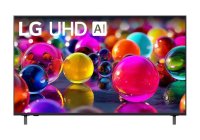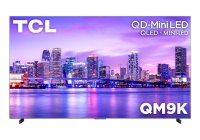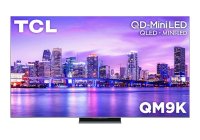Why Does My TV Display ‘Unsupported Format’ for Connected Devices?
Seeing the dreaded "Unsupported Format" message on your TV can be frustrating, especially when you're ready to enjoy your favorite content. This error typically appears when your TV is unable to process the signal from a connected device, such as a gaming console, Blu-ray player, or streaming box. Here’s an in-depth look at the reasons behind this issue and how you can resolve it.
Common Causes of the ‘Unsupported Format’ Error
Resolution or Refresh Rate Mismatch
TVs have specific resolution and refresh rate capabilities. If your connected device outputs a resolution or refresh rate that your TV doesn't support, this error will occur. For instance, a 4K signal sent to a Full HD TV will often result in an "Unsupported Format" message.Incorrect HDMI Settings
Some devices require specific HDMI settings, like enabling HDR or changing the color format. If these settings aren't compatible with your TV, the signal may not display correctly.Outdated Firmware
Your TV's firmware might need an update to support newer formats or standards used by the connected device.Damaged or Incompatible Cables
Using old or low-quality HDMI cables might result in signal issues. For instance, a standard HDMI cable may not support 4K or HDR formats.Unsupported Audio Formats
In some cases, the TV might display this error due to an unsupported audio format being sent from the device.
How to Fix the ‘Unsupported Format’ Error
Adjust the Device’s Resolution
Access the settings of the connected device and change the resolution to match your TV's capabilities.
Example: If your TV supports Full HD (1080p), set the device resolution to 1080p.
Modify the Refresh Rate
Some TVs have limited refresh rate support (e.g., 60Hz). Check your device settings and adjust accordingly.
Update Firmware
Check for software updates on both your TV and connected device.
On most TVs, this can be done via the settings menu under "Software Update" or "System Update."
Check HDMI Cables and Ports
Use high-speed HDMI cables for better compatibility with modern formats like 4K and HDR.
Try connecting the device to a different HDMI port on your TV.
Change the Output Format
Go to the settings of your connected device and switch the output format. For instance:
Change color formats (e.g., from YCbCr 4:4:4 to 4:2:0).
Turn off HDR if your TV doesn’t support it.
Reset to Default Settings
If none of the above works, reset both your TV and the connected device to factory settings. This can help resolve any misconfigured settings causing the error.
Consult the User Manual
Check your TV’s user manual or the manufacturer’s website for supported resolutions, refresh rates, and other compatibility information.
Preventing Future Issues
Check Compatibility Before Purchase
When buying new devices, ensure they are compatible with your TV’s capabilities.Invest in Quality Cables
Use certified HDMI cables that support the latest standards, such as HDMI 2.1 for 4K or 8K content.Regular Updates
Keep your TV and connected devices updated to ensure compatibility with new formats.Use a Signal Converter (If Necessary)
If your device doesn’t support your TV’s format, consider using a signal converter to bridge the gap.
Conclusion
The "Unsupported Format" message can be resolved with a bit of troubleshooting. By understanding your TV’s specifications, ensuring compatibility with connected devices, and updating settings or hardware as needed, you can enjoy seamless entertainment without interruptions. If the problem persists, don’t hesitate to contact customer support for your TV or device.



